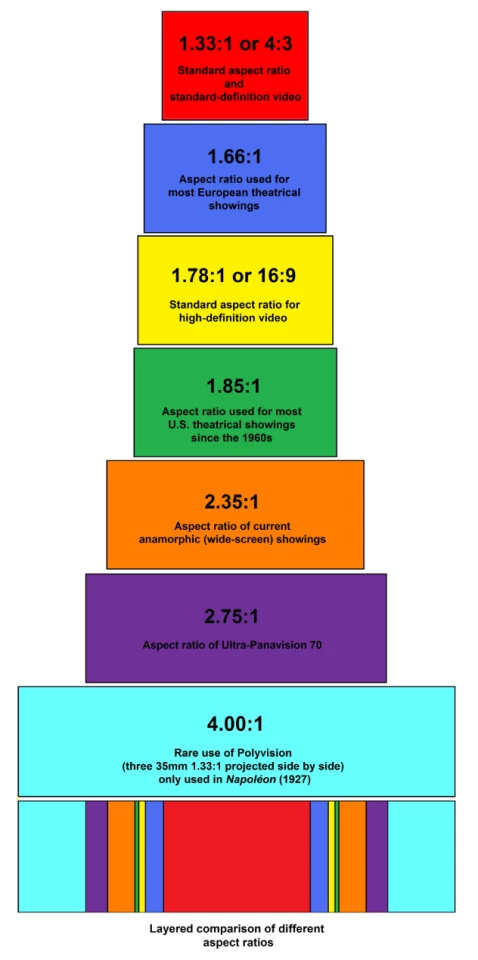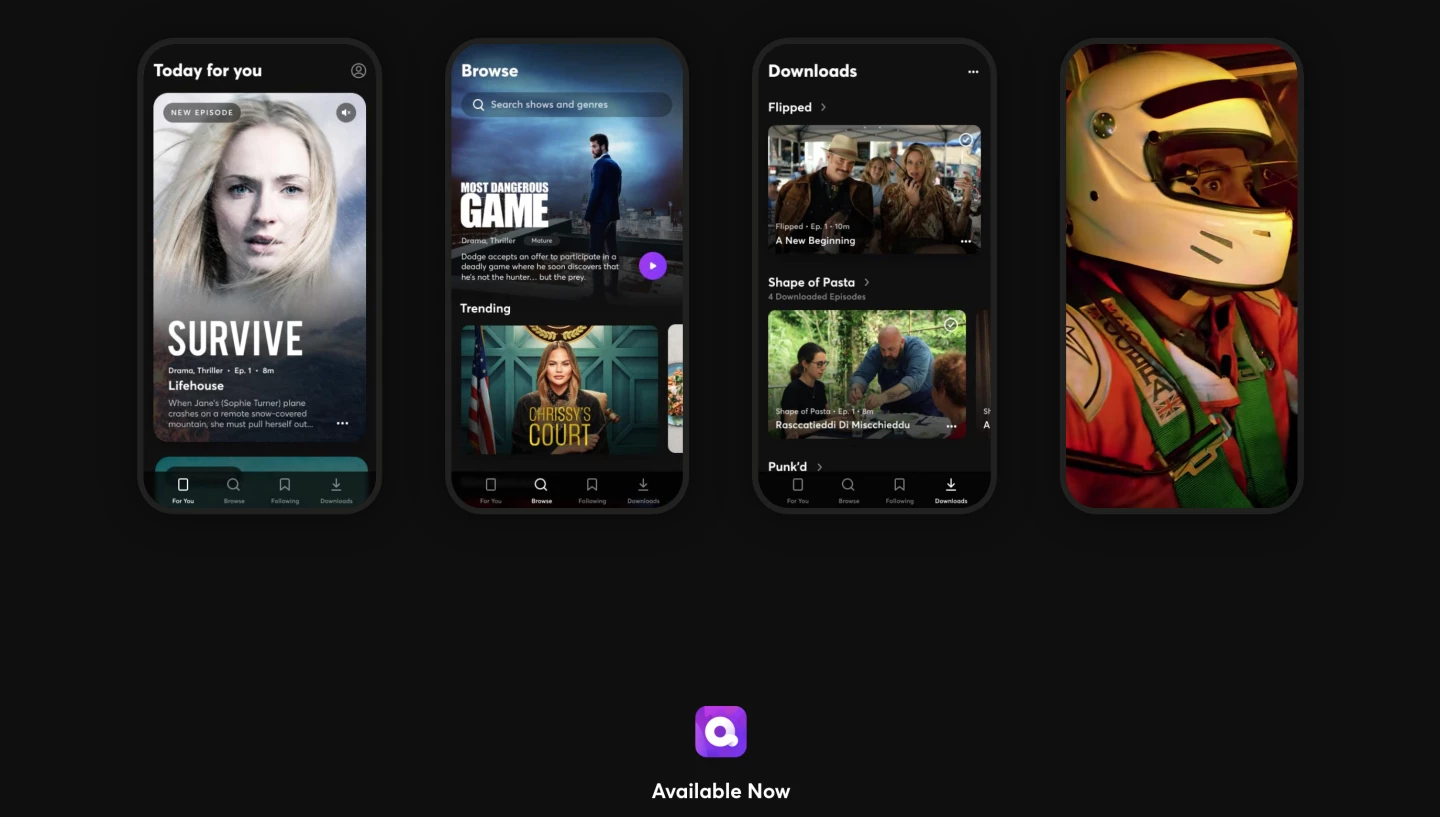Those with a good memory may recall an innocuous little culture war in the early 2010s. Smartphones were still relatively new devices, offering the novel ability to record videos and rapidly share them with others. And while people certainly could easily turn their devices horizontally to record and watch videos, plenty were shooting footage vertically.
On any publicly posted vertical video, for several years, one could find comments suggesting the footage was recorded “the wrong way.” Just turn your phone 90 degrees, many complained … A popular viral video from 2012 even declared the condition, Vertical Video Syndrome.
Now, years later, it seems the war is over and vertical video enthusiasts have won. From a multi-billion dollar streaming platform creating content specifically designed to be watched vertically on mobile devices, to the world’s first vertical blockbuster film currently in production, we could be at the dawn of a new perpendicular age.
But is vertical video really going to dominate the future? Or is it just a passing trend, influenced by the current ergonomic shape of the smartphone?
Why were movies horizontal in the first place?
Throughout history humans have, of course, produced images in a wide variety of frames. Image aspect ratios, defined as the ratio of its width to its height, could span anything from tall, narrow portrait paintings, to wide, panoramic landscapes.
When Thomas Edison’s lab was developing moving picture systems in the late 19th century it was primarily happenstance that led to the squarish aspect ratio of early cinema. The Kodak film being used by Edison’s team at the time was 1.33:1 (also known as a 4:3 ratio). For still photography this frame could create either wide or tall images, but for moving pictures this generally led to horizontally-projected films.
Traditionally it is thought that our preference for horizontally-framed moving images arose out of simple physiological function. Our field of vision feels somewhat biased to horizontal movements and some hypothesize this idea played a role in Edison’s original push for horizontally-framed moving images, despite the evidence for this being primarily anecdotal.
Whether our eyes are naturally more comfortable with horizontally framed moving images is still up for debate. Some researchers have suggested our visual processing systems are fundamentally biased toward horizontal movement while others point out our eyes actually share relatively equal vertical and horizontal fields of view, implying any preference for one over the other could simply be the result of more than 100 years of horizontal film and television. It is what we are used to after all ...

Across the 20th century, film exhibition progressively became wider and wider. An assortment of cinematic innovations presented movies in wide formats, from the short-lived Cinerama shows at 2.59:1, to the extraordinarily wide Ultra Panavision 70mm film at 2.76:1.
Modern high-definition television standards ultimately settled on 1.78:1 (commonly known as 16:9) as the optimal aspect ratio for most screens. However, many filmmakers to this day continue to experiment with a variety of different aspect ratios.
French filmmaker Xavier Dolan is perhaps one of the more playful experimenters, occasionally shifting aspect ratios within a single scene. His 2014 film Mommy is of particular note, shot primarily in a stark, square 1:1 ratio, but featuring an incredible sequence showing the main character quite literally pushing the frame open in a deeply cathartic moment.
Despite widespread aspect ratio experimentation over the past couple of decades, filmmakers rarely have crossed the 1:1 threshold and played with taller vertical frames. Outside of experimental film showings on custom-made tall screens, vertical cinema seemed to be of little interest to both creative filmmakers and general audiences.
And then came smartphones…
By design, smartphones need to be taller than they are wide. They must fit comfortably into our hand. However, the sheer variety of brands, makes and models, mean there is little uniformity in the world of smartphone displays. On average most smartphone displays sit in the same aspect ratio territory as modern HDTVs. Although, of course, holding a smartphone vertically in your hand means you are viewing a 9:16 aspect ratio (or even taller than that in some instances).
Smartphone designers, aware of the century-old preference for horizontal media, built their devices to be swiftly responsive when one needs to switch to a landscape view. Yet most people, for whatever reason, simply don’t often turn their phone sideways to either watch, or record, video.
By the end of the 2010s it seemed the great horizontal/vertical smartphone war was over, and vertical viewers had prevailed. Apps such as Facebook and Instagram adapted to the way people mostly use their smartphones. The first step was embracing square 1:1 imagery, and then apps such as Snapchat and TikTok came along, deeply normalizing vertical videos in the eyes of millions of people.
A 2017 survey found 72 percent of millennials do not rotate their phones to watch videos horizontally, even if the video is produced in a horizontal format. So to the inevitable question – if most people are consuming content primarily on their smartphones, and the vast majority do not turn their devices horizontally to watch content, then why are content-producers not creating more vertical media?

Vertical "Content"
One of the more interesting recent vertical video experiments came from an Australian team of creatives in 2019. Called Content, the seven-part TV series follows the amusing story of an obsessive millennial constantly searching for fame.
The general conceit of the series is it takes place entirely from the perspective of the main character’s phone screen. The show is fundamentally designed to be watched on a smartphone, and it results in a unique viewing experience, especially if one happens to receive personal text messages or app notifications while watching.
Content is an undeniably compelling vertical experiment, but it does sit in the shadow of a more particular lineage of found footage cinema. In fact, Content is less a novel form of vertical storytelling, and more a fascinating spin on a burgeoning sub-genre of film sometimes referred to as ScreenLife.
This unique subgenre comprises films created entirely from the perspective of a computer desktop. Perhaps the best known, although certainly not the first, example of ScreenLife is a 2014 horror film called Unfriended. The film takes place entirely within the frame of a high school student’s Mac laptop screen.
Content plays in the same aesthetic sandbox as many ScreenLife projects, and while the series is certainly novel, it doesn’t exactly experiment with vertical photographic compositions in any particularly groundbreaking way.
The Apple “Stunt”
In early August 2020 Apple released a short film from award-winning filmmaker Damien Chapelle (Whiplash, La La Land, First Man). Titled The Stunt Double, the entire project is ostensibly a big ad designed to show off the strength of the iPhone 11 camera. Nevertheless, the short film is also one of the more successful commercial vertical video experiments to date.
The nine-minute film is essentially a charming replay of iconic moments from the past century of cinema, but all reframed from a vertical perspective. Chazelle’s experiment presents a deeply intriguing assortment of mostly successful vignettes. The film embraces the strengths of a tall vertical frame, consistently drawing the eye up and down the image using a variety of clever composition techniques.
Watched on a smartphone, the film is an interestingly novel experience, suggesting there are certainly some creative ways to play with vertical frames. But, view the film on a television in your lounge room and it quickly becomes frustratingly redundant. Vertical films may play well on a smartphone or tablet, but they’re a little pointless on a traditional horizontal screen.
And the question naturally arises, do people really want to consume narrative film and television vertically on a smartphone?

The billion-dollar bet
From shepherding Walt Disney Studios through a transformative period in the 1980s and 90s, to co-founding DreamWorks Pictures with Steven Spielberg, Jeffrey Katzenberg is not in the business of missing important trends in entertainment. He saw the trend for smartphone viewing dramatically grow over the past decade and jumped on it. In 2018 he founded Quibi, designed to be an entirely new kind of streaming platform.
Quibi, short for Quick Bites, is intended to be something like Netflix, but just for streaming entertainment on mobile devices. Aimed at younger audiences, all the content produced for Quibi is developed in brief 10-minute episodes. And, all the content is produced to be played either horizontally or vertically, only on tablets or smartphones.
Katzenberg reportedly raised well over US$1 billion dollars to develop the Quibi app and produce unique content. Huge Hollywood names were recruited to produce Quibi content and many embraced the novelty of the medium, creating a variety of unique content, all within the framework of 10-minute chapters.
Quibi had everything going for it, and it launched in April 2020 to huge fanfare. Nearly two million app downloads in its first week suggested Katzenberg’s big gamble had paid off. But within weeks the buzz had fizzled out and the subscriber count started to flatline.

The platform was rapidly losing subscribers and a torrent of “Quibi is bad” op-eds began rolling in. By July it was claimed the service barely had amassed more than 2 million active subscribers. Katzenberg quickly blamed the failure on the COVID-19 pandemic, although many commenters disagreed. At a time in history when more people than ever are sitting at home looking for distractions, Quibi’s failure seems less pandemic-related and more an indication that it may not have been a good idea in the first place.
The Quibi postmortems are ongoing, as experts try to figure out what went wrong. Obviously people are not averse to watching content on their smartphones, so why didn’t they embrace Quibi? Scrolling through vertical videos on TikTok may be one thing, but is it possible people simply don’t want to sit on their couch in front of their big television set, and watch episodic content on their smartphone?
The multi-million dollar WW2 vertical blockbuster
In early 2020 Russian filmmaker Timur Bekmambetov began filming an ambitious World War 2 blockbuster called V2. Escape From Hell. The film is being shot using a vertical aspect ratio, and the US$10-million budget is partially funded through a partnership with MTS, Russia’s biggest mobile phone carrier.
Bekmambetov is no stranger to unconventional projects. As a producer, he has been one of the biggest advocates of ScreenLife projects over the past few years. He even produced an original Snapchat series in 2019 called Dead of Night, telling a zombie story using the same smartphone screen perspective as Content.
The project, which has managed to continue filming throughout the COVID-19 crisis, is scheduled for release in early 2021. Bekmambetov is reportedly planning two versions of the film, one in vertical format for smartphones, and a traditional horizontal version for cinemas.
With Quibi still committed to producing new content for at least the next year, and Bekmambetov’s blockbuster due to hit in 2021, it’s clear there is still some life left in the vertical cinema trend. Quibi’s massive launch failure earlier this year isn’t necessarily the death knell for vertical content, but it does suggest many are not ready to consume all content on tall smartphone or tablet screens.
There is still some life left in your good old horizontal TV screen … And when you're ready to go full vertical, Samsung is way ahead of you. It's already released a vertical QLED TV, just in case you are completely done with 20th century horizontal screens.








